
PUSH THE EDGE



PUSH THE EDGE

Jæren originally signifies edge. Combined with the several spectacular landscapes and natural phenomena we have in this region; the name edge of Norway is a fitting match.

EXPLORE THE EDGE

Do you want to push your limits? Or is this the day to take a break and relax? Step back. Maybe you would like to venture into something new to explore. Or have fun and enjoy. Whatever you wish for, the possibilities are endless. Edge of Norway.
If you don’t quite know what you’d enjoy, we can serve you a crazy combo. A package of different experiences, a combination of all the extremes Push – Enjoy – Explore – Step Back –from the Edge of Norway. Live the life of your dreams!
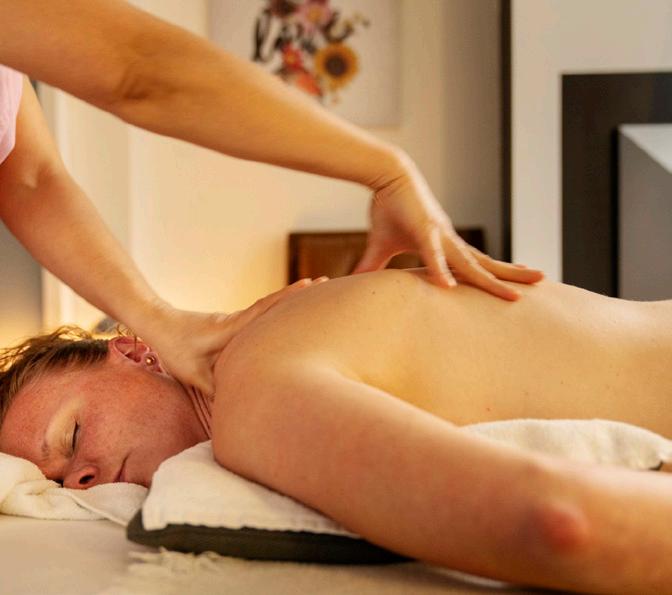


With uniquely wild and raw landscapes as your backdrop, Edge of Norway promises an unforgettable adventure. Marvel at towering mountains, deep valleys and breathtaking waterfalls. Travel more consciously and help preserve both nature and culture, while supporting the local community that makes this region unique. Wander along pristine, sweeping beaches and savour the finest local flavours – fresh from the meadows, mountains and sea. Go fast or go slow. In any case, you will feel truly alive!
Welcome to Edge of Norway! Don’t let life escape you – travel today!
Per Morten Haarr Director of Tourism Region Stavanger
Editor and layout: Region Stavanger
Design: Fabel Media AS – Prepress: Grafo Printing: Ålgård Offset
Front page photo: Preikestolen © Lars Korvald/Ruben Soltvedt
Page 2 and 3: © Sune Eriksen, Tommy Ellingsen/RE-NAA, FotoKnoff/Amanda Sotberg, Marie von Krogh/Vinterfilm/Visit Sandnes
Editions: 125 000 ex., in Norwegian, English, German, Spanish and French
Editorial closed in February 2025, may be subject to errors and changes. For all forms of reproduction, please obtain permission in advance. Distribution for free.

Norway is beautiful all year round – from the colours of autumn to the bright lights of winter, the blooms of spring, and the warm days of summer. Travelling outside the high season allows you to experience a more authentic side of Norway, enjoy greater access to cultural offerings, and explore nature at your own pace. At the same time, you contribute to a more vibrant local community.
Each season has its charm. Autumn with its vibrant colours, winter with its crisp air and beautiful light, spring as nature awakens in full bloom, and of course summer with its warm, lazy days.
Most museums are open all year-round, and cultural offers such as concerts and theatre plays are much greater during the low season. Nature experiences are always within reach, and visiting outside peak times means you’re more likely to have major attractions all to yourself, even if some trips require a little extra effort. Guide services that include transport are available throughout the year. If you have little hiking experience, joining a guided tour ensures you have the right equipment and local knowledge for the conditions. By choosing to travel out of the main season, you help to ensure the viability and sustainability of activity providers, accommodations, and restaurants over time, while also reducing pressure on the destination during peak periods.
Make an extra effort by picking up any litter you see in nature and disposing of it in the nearest bin. You can also take part in organised cleanup events, such as “Ryddeaksjon Jærkysten”, a great initiative by Jæren Friluftsråd to help keep our coastlines and beaches clean. Ryfylke Friluftsråd also regularly arranges clean-up days.

You can easily get here by train from Kristiansand and Oslo, and there are several daily connections between Stavanger and Egersund – see go-aheadnordic.no for times and prices. Kystbussen runs between Bergen and Stavanger (via Haugesund), while Konkurrenten runs between Oslo and Stavanger (via Kristiansand and Flekkefjord – see nor-way.no. Local buses and ferries in the region are regulated by Kolumbus, you can smoothly plan your journey with their travel planner at kolumbus.no. You can also rent city ebikes from Kolumbus in Stavanger. Buses operated by pulpitrock.no and gofjords.no take you to the starting point for the hike to the famous Preikestolen.

Fjordline offers a car ferry from Hirtshals/ Denmark to Kristiansand, Stavanger, and Bergen. Tickets can be bought at the tourist information offices in Stavanger and Sandnes. Use the official campsites for a safe and comfortable experience. Camping at rest areas or meeting points (M) along the road may lead to fines and traffic disruptions. Bobilplassen.no is a useful

site for those traveling with a motorhome. Camping.no is also a helpful source of information. Feel free to ask our destination experts for recommendations.
When driving through a toll booth or a point with automatic number plate recognition, such as ferries or tunnels, the vehicle’s passage is registered, and charges are automatically applied to the driver, making travel seamless. You can set up a user account on ePass24 for easy and convenient management and payment of tolls and ferry fares. Visit autopass.no, autopassferje.no, or epass24.com for more information.
USEFUL APPS:
Entur (timetables for public transport in the whole of Norway)
Kolumbus Billett (tickets for local buses, trains, ferries, and electric bikes)
Go-Ahead Nordic (train)
Stavanger Airport, Sola, has direct flights to around 60 destinations in Norway and abroad with SAS, Norwegian, Widerøe, Lufthansa, KLM, Wizz Air and Loganair – visit avinor.no for details. The airport express bus runs between the airport and Stavanger – see flybussen.no. Local bus route 42 connects the airport with Sandnes via Solakrossen and Forus – see kolumbus.no
Rental companies, such as Hertz, offer electric and hybrid cars to their guests. Search for electric or hybrid options, or explore Hertz’s Green Collection.
Combine fjord sightseeing with a mountain hike or other activities. Updated ferry schedules can be found at lysefjorden365.com/ferry.


Stavanger Taxi
Order a taxi in our app Taxifix or call us on +47 51 90 90 90.
We drive you to the great experiences in our region.
stavanger-taxi.no

Veteranskipet Sandnes
All types of boat trips with one of Norway’s most beautiful ships. Charter, wedding, jubilee, harbour events, etc.
Full catering, serving, entertainment and excursions.
www.mssandnes.no
Tel. +47 97 15 65 73 post@mssandnes.no

Boreal
Book your round-trip ticket to Pulpit Rock here.
We offer frequent departures and the most reasonable tickets.
pulpitrock.no











We share our best advice so that you can have a safe and responsible trip.

Spending time outdoors is a key part of Norwegian culture and identity, often seen as something “typical Norwegian”. Being active in nature, no matter the weather, will make you happy. Give it a try!
Outdoor life is so important in Norway that a law ensures everyone free access to nature. Allemannsretten is a wonderful public right and an essential part of Norwegian cultural heritage. In short, it allows everyone to roam freely on foot or skis in the wilderness, and to camp for up to two nights, as long as it is at least 150 metres from the nearest house or cabin. While Allemannsretten grants many grants many rights, it is also a privilege that comes with responsibility. Further obligations are as follows:
• Do not walk through cultivated fields and meadows
• Close gates behind you and do not ruin fences
• Lighting fires or bonfires in forests and fields is prohibited from 15 April to 15 September.
• Dogs must always be kept on a lead – be considerate of grazing animals
• Do not disturb animals and birds, including nests and chicks
• Take your litter back and leave nature without a trace
We take care of what we love. The youth branch of the Norwegian Trekking Organisation (DNT Ung) has together with POW (Protect Our Winters) Norway drawn up seven simple
environmental rules for a more traceless outdoor life:
#1 Travel less, experience more
#2 Focus on experiences, not equipment
#3 Repair everything, always
#4 Eat greens
#5 Shared driving is responsible driving
#6 Be prepared for unexpected litter
#7 Show the way, be a sustainable role model
To prevent accidents in the mountains, the Norwegian Tourist Association and the Norwegian Red Cross have drawn up nine rules:
1. Plan your trip and inform others about the route you have selected
2. Adapt the planned route according to ability and conditions
3. Pay attention to the weather and the avalanche alerts
4. Be prepared for bad weather and frost, even on short trips
5. Bring the necessary equipment so you can help yourself and others
6. Choose safe routes. Recognise avalanche terrain and unsafe ice
7. Use a map and a compass. Always know where you are
8. Turn back in time; there is no shame in going back
9. Conserve your energy and seek shelter if necessary
The weather in our part of the country changes fast, and you can quickly experience several seasons in one day. You can experience windy rainy days no matter what time of year you visit, and we cannot guarantee sun and heat during the summer. Therefore, it is important to

be prepared. Dress according to the weather conditions and bring extra clothes in your backpack. Remember that it is always colder in the mountains than in the city. You can go hiking in any weather, as long as you plan well in terms of conditions, equipment, fitness level, experience, and local knowledge. If you have little hiking experience or are unsure about the conditions, you should go with a nature guide. It’s a good idea to add an extra day when planning your trip so you have more flexibility –when the weather doesn’t co-operate, you can enjoy museum visits and shopping instead. Do you need hiking gear? We recommend local manufacturers and Nordic brands. You can also rent necessary equipment from guide companies or frilager.no.
• Wear wool as a base layer, followed by a mid-layer such as a wool jumper or fleece, and a windproof jacket
• Bring rain gear, a hat, mittens, and a change of clothes. A reflective vest can be useful, making it easier to find you in case you need help
• Good footwear is essential – preferably hiking boots
• Bring food and drink adapted to the length of the trip
• First aid equipment
• Map, compass, GPS, and flashlight
• Bring your mobile phone, but be aware that there may be areas without signal
• A wind sack is a good shelter from the weather


USEFUL APPS: yr.no (weather forecast) varsom.no (landslides and more)
Quality of bathing water can be found on the municipalities’ websites
RULES FOR FLYING DRONES IN NORWAY:

Explore the raw beauty of Norway, where nature’s brilliance knows no bounds. Perched on the edge of a towering mountain, high above the fjord, the Edge of Norway offers an experience unlike no other. Here, the adventure is yours to shape – soar high, stay low, take it slow or push your limits. One thing is certain: you’ll feel life’s pulse with every breath.

2 3
– the most iconic of them all
If Norway had been designed by landscape architects, Preikestolen would have been an award-winning work of genius. No other mountain better sums up the thrilling beauty that is the hallmark of Norwegian nature. Such a famous trek creates high expectations. Does Preikestolen live up to the hype? It might be sunny or rainy, windy, or foggy – but that is part of the charm. You know when you approach the end of the steep trail through the birch forest: The landscape opens up and you sense the depth around Preikestolen’s surprisingly small plateau.
• Starting point: Preikestolen Basecamp (parking fee)
• Season: April–October (winter season with guide)
• 8 km, 4 hours return
• Bus tickets are sold at the tourist office
– the big brother of attractions
Kjerag isn’t just higher than Preikestolen; it also delivers a grand finale – the famous Kjeragbolten, a large, round boulder suspended between two mountainsides. Nature must have been feeling playful when it wedged the boulder into the crack. Kjerag attracts the daring. Even though you can’t see the edge when you first arrive, you sense the abyss that awaits you. Perhaps it’s the way it towers over the fjord? A 1,000-metre vertical wall of granite is a humbling sight. Kjerag is a demanding trip, with an unbelievable view offering memories for a lifetime. Do a bit of preparation in advance and make sure you have a safe hike to Kjerag.
• Starting point: Øygardstøl
• Season: June–September
• 10 km, 6 hours return
• Bus tickets are sold at the tourist office
– the world’s longest wooden staircase
Let’s get some action in the 4444 steps up the mountainside! The wooden staircase follows the watergates supplying the hydropower station at the marina in the Lysefjord. This is where hydropower history meets muscle power! While you’re sweating away up the steps, contemplate how it was to live and work here in the first half of the century. At the top, you’ll see why the muscle ache was worthwhile. In addition to the 4444 steps, there are many opportunities for longer stays. Flørli is the perfect base for exploring several hiking trails in one day.
• Starting point: Stavanger, Lauvvik, Forsand or Lysebotn
• Season: June–October
• 9,7 km, 4 ½ hours return
• Tickets can be purchased at: billetter.kolumbus.no/en


– an easy hike with views of cities, fjords and mountains
At 323 m.a.s.l., you have splendid views, both of Stavanger and Sandnes, as well as of the mountainous area facing east. The easiest hike to Dalsnuten is on a path passing lake Gramstadtjørn and through a small forest with available shelters. For those with prams, there are accessible trails from Gramstad (which also has charging facilities for electric bikes) to Kubbetjørn and Lake Revholstjørn.
• Starting point: Gramstad
• Season: All year
• 3,9 km, 1 ½ hour round trip
• Bus no. 29 to Gramstad (1,5 km to the starting point for the hike)
– a potent rock formation
Be amused by Trollpikken, a phallus-shaped rock formation that has become the most light-hearted symbol of the potency of Norwegian nature. In June 2017, somebody destroyed Trollpikken by cutting it off with heavy tools. The local people worked hard to put it back in place with lifts, steel rods and epoxy. The landscape that surrounds Trollpikken resembles a scene from a Tolkien book with rolling hills, small mountains, rocks and shifting cloud cover. Trollpikken was shaped by the forces of the last Ice Age over 10,000 years ago.
• Starting point: Parking at the FV62, follow the road Kjervallveien up the hill Kjervallbakken 900 m
• Season: all year (weather conditions permitting)
• 4,2 km, 2 hours return

Activity level:
Easy hike
Medium hike
Demanding hike
Expert hike
– a world-class waterfall!
The hike to Rogaland’s highest waterfall takes around 30 minutes. Along the way, you’ll find several vantage points where you can stop and take in the spectacular view.
From here, you can either return to the car park or continue to Mån farm in the Fidjadalen valley. The trail is quite steep, but stairs and chains are in place to assist you. There is an open heated shelter by the farm, and accommodation is available with advance booking.
• Starting point: Månafossen parking (fee) at Eikeskog
• Season: All year
• 2,6 km, 2 hours return to Mån

The hike to Ramnstoknuten is signposted from the Dirdal marina. The summit is at 562 m.a.s.l. While the hike isn’t particularly long, it does involve a significant ascent. You’ll cross the Dirdalsåna river via a footbridge before continuing on the marked trail to the top. Along the way, you’ll have two alternatives for the hike; Via Skaret or Via Padlane. Via Skaret is the shortest, but also the steepest route. After the first climb, you are rewarded with a view of the Høgsfjord, where the two fjords Frafjord and Høgsfjord meet.
• Starting point: Dirdal marina
• Season: All year
• 6,5 km, 5 hours return
GUIDED TOURS TO OUR FAMOUS ICONS
The experience becomes even better, and above all safer, if you do the hike with an experienced nature guide. Guiding is offered by: Get Guided Norway, Guidecompaniet, Lysefjorden Adventure, Magma Geopark, Nordic Paddling, Stavanger Adventure, Adventures in Norway and Fjord Hikes. More information and booking of tours:

Explore the small-town charm in Egersund and Flekkefjord, as well as the old trading post of Sogndalstrand. The lunar landscape offers unique hiking areas and exciting attractions such as Trollpikken, Helleren and the Eigerøy lighthouse.
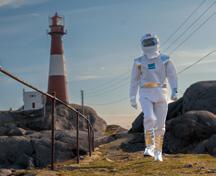
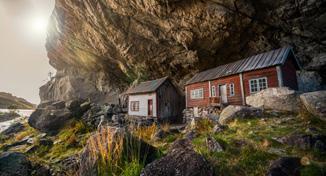





1. Trollpikken © Arne Ove Østebrøt, 2. Eigerøy fyr © Tjomlid Media/Agder Droneservice AS, 3. Helleren, Jøssingfjord © bktfoto, 4. Tronåsen Grand Prix © Grand Hotell Egersund, 5. Sogndalstrand © FotoKnoff Amanda Sotberg, 6. Flekkefjord © Sandra_Surdal, 7. Fishing at Bjerkreimselva river © Alf S Ognedal, 8. Egersund © Arne Ove Østebrøt

High or low, short or long, shallow or deep! Are you ready to walk in a unique landscape – on your terms and at your own pace? And how about a trip to the “moon”?
From easy day hikes to challenging multi-day treks, there are options for every level. Some areas remain accessible year-round, while others can only be explored in mid-summer – unless you’re planning to go skiing.
Kongevegen partly follows the old riding path over Jæren and continues along the coast from Kvassheim to Hå gamle prestegard. Starting point: Parking at Varhaug old cemetery, Grødalandstunet and Hå gamle prestegard. 8,4 km, 3 hours. Season: All year.
From the top, enjoy magnificent views of cities Stavanger and Sandnes, the Gandsfjord, the North Sea and Ryfylke. Going up from Hommersåk also gives amazing views of Riska and Strandalandet. There is a winding road towards the top suitable for prams and bikes. Starting point: Likaiveien, Hommersåk. 4,5 km, 1,5 hours return. Season: All year.
A perfect destination with a view of both the North Sea and the islands – not far from the city and easily accessible. Even though the mountain is only 70 m.a.s.l. you’re rewarded with a 360-degree view. Starting point: At the foot of Randabergfjellet. 1.4 km, 20 minutes return. Season: All year.


The summit, at 234 metres above sea level, offers breathtaking views in all directions. In the highest areas of Rennesøy, there are a total of 20 km of marked trails. Starting points: Vikevåg, Sel, Dale or Østhusvik. 5.6 km, 3 hours return. Season: All year.
A nice and easy walk in historical Sola. Among the highlights are the Sola ruin church, stone memorials and war memories in wonderful nature. An easy stroll in the open cultural landscape. Starting point: Sola Strand Hotel. 8.4 km, 2 hours return. Season: All year.
The area surrounding Synesvarden is the largest remaining heathlands at Jæren. This is what the rest of the flatland at Jæren looked like before the agriculture changed Jæren in the last part of the 1800s. Roundtrip from Holmavatnet to Synesvarden and further to the monument


The hike starts at Ydstebø marina. From there, continue to Håland before following the trail along reefs and old bunkers back to Kvitsøy lighthouse. At the lighthouse, you get a good view of the sea, Skudenes, Karmøy and Bokn. Experience rough coastal landscapes with waves and reefs. The trip goes over pastures with many fence splitters, so stick to the marked path. You can also see old bunkers from the war on the route, from when Kvitsøy was under German occupation. In very bad weather this trip is not recommended. Starting point: Ydstebøhavn. 2.6 km, 1-hour return. Season: All year, but not recommended during bad weather.
Hike through the open and flat beach landscape. Follow the coastline southwards, passing Sele harbour and continue towards Bore beach. Starting point: Parking at Vigdel and Bore. 9 km, 2–3 hours. Season: All year.
This hike through moonlike landscapes starts near the famous two houses at Helleren. The two houses are built sheltered underneath the mountainside and are the oldest settlement in Sokndal. Follow the steep path up to the picnic area off the FV44. Cross the road and follow the marked trail into a forest area. On the way to the top (315 m.a.s.l.), you’ll get the chance to enjoy the ocean and fjord views of the Jøssingfjord with its hairpin roads.
Starting point: Parking at Helleren. 5.9 km, 2 ½ hours return.Season: March–October.
The mountain is located at 1209 m.a.s.l. gives a free view in all directions. The hike follows the ski lift for a while before making a turn to the left and passing lake Svartopstjødna.
Starting point: The parking lot by Sirdal Høyfjellshotell. Return 4–5 hours, 12 km.
Season: May–October.
At 907 metres above sea level, Vinjakula is the highest peak in Magma UNESCO Global Geopark. Learn more about hiking in Bjerkreim at destinasjonbjerkreim.no.
Starting point: Veen. 4–5 hours , 13.4 km.
Season: All year.
Varberg, Egersund’s city mountain, is easily accessible, with nature trails and a paved road leading to the top. From the summit, you are rewarded with a fantastic view of the city, the coastline, and the district. Use the binoculars at the top to spot details in the terrain.
Starting point: Egersund city centre. 2.9 km, 0.5–1 hour. Season: All year.
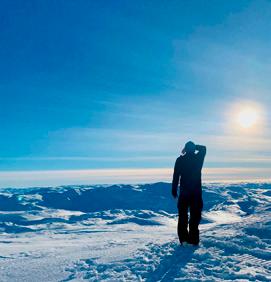
The mountain rises 463 m.a.s.l. offers panoramic views over Dalane. You follow the “Experience Dalane Trail” through the forest, along Dypingsvatnet to Røysland, then via a red-marked trail in open landscape to the summit.
Starting point: Parking at the information board for the “Experience Dalane” trail. 3,9 km, 1–3 hours. Season: All year.
The mining road to Gursli mines must have been a tough route to transport ore on during the First World War. Today, this is a great path to follow to Gullvann and the mines there. The hike passes by Hattesteinan, some well-balanced glacial erratic boulders. Starting point: Parking at Gursli. 4 km, 2 timer. Season: All year.
Perched along the Kjerag trail overlooking the breathtaking Lysefjord, this spot offers unparalleled views from a vantage point that’s both safe and convenient. The epic round trip (with an impressive 750-metre ascent) takes you on a thrilling adventure through granite terrain, where you’ll encounter an intriguing offshoot near Kjeragbolten. Starting point: Kjerag Parking (640 m a.s.l.). 11 km, 5-6 hours. Season: June–September.
A a demanding hike with 600 vertical metres. Around 75% of the hike runs along dramatic mountain ridges via Skjerajuvet gorge, passing the majestic Hatten mountain and the ‘infinity pool’ Fantapytten. It ends at Preikestolen car park. Starting point: Parking at The Bolder. 9 km one way. 5 hours. Season: May–October.

There’s nothing quite like getting out on the water – feeling the wind, the sea spray on your face and the sense of freedom as you explore narrow fjords surrounded by towering, dramatic mountain ridges. Fjord aboard!
A fjord is a deep, narrow, long-stretched sea channel with steep land on three sides. The mouth of the fjord towards the sea is often shallow. Fjords were created by gigantic tongues of glaciers through several ice ages that formed the landscape. In western Norway, the fjords are often surrounded by dramatic mountain landscapes, and they often have more calm waters than the open sea and act as natural harbours. Fjord, descending from the Old Norse fjorðr, is one of the few Norwegian words used internationally.
Fjord cruise
The easiest and most popular way to experience the fjord is by boat from the water. The Lysefjord, the most famous fjord in our region,
stretches 42 km inland and is only a short boat ride away from Stavanger. The fjord is renowned for icons such as Preikestolen, Kjerag and Flørli, and you can choose whether you would like to take a classic fjord cruise, a fast-paced RIB, or visit the fjord on a modern yacht or a veteran ship.
DID YOU KNOW THAT LAKES CAN ALSO BE FJORDS?
You will often find them in the extension of a fjord, where they have been separated from the sea. Ørsdalsvatnet lake is such an inland fjord and can be experienced on a boat trip with the M/K Ørsdølen on Sundays during summer.

Lysefjord, Preikestolen, nature and fresh air. We have it all!
Let us take you to one of the most amazing places you can experience. Daily departure at 11:00 from Strandkaien.
Tickets: helgoy.no
Tourist information office at the pier (Strandkaien)









As the fjords have served as transport routes since the arrival of ships, you can experience exciting cultural heritage sites in the fjords and discover traces of important industrial history.
The Jøssingfjord is known for Helleren, two small houses from the 1800s protected by a natural mountain shelter. The houses were inhabited for thousands of years. In the early 1900s, the mining industry was established in the fjord, which is the subject of the new science museum (see p.46). The Jøssingfjord is also known for the Altmark incident, considered the first act of war in Norway in February 1940.
The old industrial settlement of Flørli in the Lysefjord is known for being home to one of the longest and steepest wooden stairs in the world, with 4444 steps from the fjord up the mountain. Are you up for the challenge?
At the distinction of the flat landscapes of Jæren in the west and the mountains in the east, you will find the Gandsfjord. Experience the fjord on the short train ride between Stavanger and

The Hafrsfjord is an inlet. According to Norse sagas, Harald Fairhair united Norway into one kingdom here in 872, as commemorated by the Swords in Rock monument.
The many iconic hikes along the fjords offer breathtaking views. For those seeking excitement and adrenaline, the Via Ferrata high above Jøssingfjord is a great choice. If you prefer to get closer to the water, you can enjoy a kayak trip. More information on water activites can be found on the next pages.




Explore the magnificent Lysefjord and Preikestolen on a 2,5 hr cruise
Departures at 11:00 or 12:15 June – September
Tickets: At the quay (Strandkaien)
Tourist Information norled.no

Winter opens up a landscape of possibilities. Enjoy alpine skiing in one of the region’s many ski lifts, roll in the snow for a refreshing thrill, explore cross-country adventures in the mountains, or take a hike along our beautiful beaches. Our region offers unforgettable experiences, even in winter.





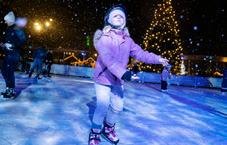



The islands are a significant part of our idyllic archipelago and coastal landscape. Bridges and (express) ferries connect most of the islands. Get onboard for an island (w)hopping adventure!
The Ryfylkeøyene islands offer fascinating coastal landscapes, with views of fjords, straits and lush islands. Numerous prehistoric signs tell the story of a long settlement history that has shaped landscape. The climate is maritime, mild, and humid, and the islands here are green almost year-round.
Did you know that nearly 40% of the Norwegian tomato production takes place here?
Among the islands outside Stavanger, Lindøy and Langøy are particularly popular recreational areas. Enjoy hiking trails and well-adapted picnic areas – just a short boat ride away from Stavanger. Several daily express ferry departures from the Fiskepirterminal.
Kvitsøy offers a whopping 365 islets and reefs –one for every day of the year! Swim at Sandrenna bay, stroll past blooming gardens in the Ydstebøhavn harbour, visit the lobster museum and end the day with a mouthwatering meal at Restaurant Grøningen.
Outside Egersund, Eigerøy is a popular hiking destination. Easily accessible by bridge from the mainland and a short bike ride from the city centre. Highlights of the island are the Skadbergstranden beach and the Eigerøy lighthouse.

We do our utmost to give you a clean coastal landscape, offering unique possibilities for recreation and a diversified outdoor life.
Go to our web pages to find inspiration, where you also can download maps and other useful information.
www.ryfri.no

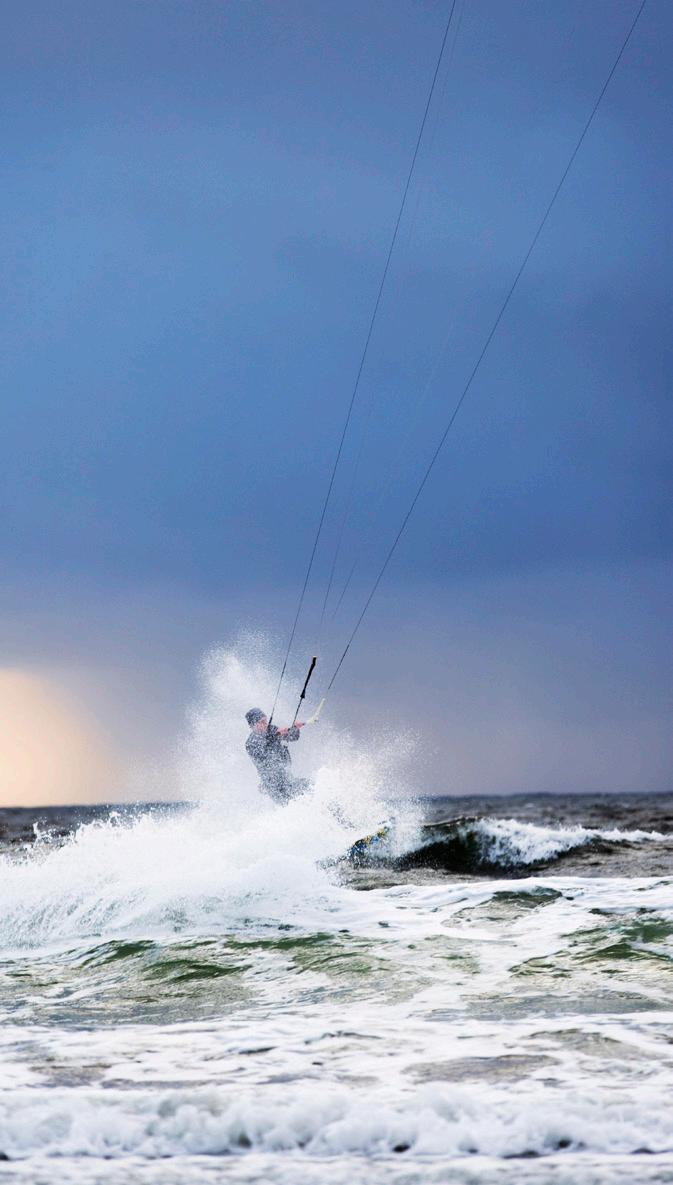
High, low, steep, or diagonal. Swimming, surfing, diving or a trip by boat in rough seas.
Mountain climbing or a bike ride, leisurely or intense – the choice is yours! On the edge of Norway, you can feel the pulse.
With close proximity to the sea, beaches, fjords and islands, numerous lakes and rivers, our region is a paradise for water sports. Whether you are a beginner looking to try something new, an experienced paddler or a pro surfer – there is something for everyone. Water sports are activities you can do all year-round in all kinds of weather. Best of all – if it’s raining, you’ll get wet anyway!


In many places in the region, you can go for guided tours, take courses, and rent equipment for kayaking, canoeing and SUP: the Lysefjord, Hafrsfjord, Store Stokkavatnet, Klosterøy, Frafjord, Lutsivatnet, and in Sirdal. Look for these providers: Nordic Paddling, Sola Strand Hotel, Klostergarden, Frafjord Kayak & SUP, Fjordbris Hotell, Sirdal Fjellpark and Frilager.

For beginners, the conditions are good in the summer and early autumn, with warm water and relatively small waves. The beaches at Sola, Hellestø, Brusand, and Bore are well-suited for wave surfing. Bore Surf Senter, Boretunet and Sola Strand Hotel offer surfing courses. At Bore Surf Senter and Sola Strand Hotel Activity Center, you can also try kiting.
Are you brave enough for an ice bath or would you prefer to wait for more comfortable summer temperatures? Choose from all the beautiful sandy beaches along Jæren and numerous bathing places at lakes and rivers. Orrestranden and Borestranden are Blue Flag beaches. Ogna and Brusand beaches are easily accessible by train, and the Skadbergsanden bathing area is just a short bike ride from

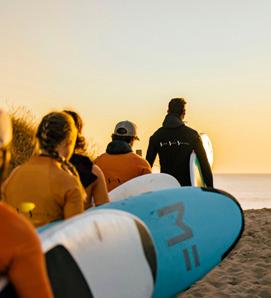
Egersund. Godalen, Vaulen, and Møllebukta are all popular swimming spots in Stavanger, in Egersund the locals go to Vannbassengene, residents in Sandnes go to Bråsteinsvatnet, and at Ålgård, Perlå in Edlandshagen is a favourite. Feel free to ask the locals about their best swimming tips.
A visit to the sauna followed by a dip in the sea or lake has become increasingly popular. Damp AS and BookSauna offer several saunas in the Stavanger Region that you can book for a few hours. At Preikestolen Basecamp you can relax in the warmth after the hike to Preikestolen. There are also saunas at Utstein Kloster Hotel, Dirdalstraen, Fjordbris Hotell, Hummeren Hotel, and Sola Strand Hotel.
For those who enjoy pushing their limits, there are several great climbing opportunities both indoors and outdoors. Anorthosite and gneiss are both sustainable and solid igneous rocks well suited for climbing and bouldering. Try the many marked climbing routes in the Magma UNESCO Global Geopark, especially in Eigersund and Sokndal. Sandnes is also known for good climbing areas, i.e. Bersagel, Dale, and Gramstad. The climbing club Bratte Rogalands Venner has published a guide to climbing in Rogaland, see brv.no.
In Sandnes, you can visit Skogsprett Klatrepark in Melsheia, a climbing and net park that is also suitable for younger children. With older children, you can go to Høyt & Lavt at Sirdal Fjellpark. Both parks offer courses of different difficulty levels. Prefer to climb indoors? We recommend the climbing halls AIR Forus, Vår Energi Arena Sørmarka, and Eigersundshallen.
Via Ferrata
Another way to test your climbing skills is Via Ferrata. There is a route in the Jøssingfjord, called “Migaren”. To hike this, book equipment and a guide at the Magma Geopark office in Egersund or the Jøssingfjord Science Museum. At Via Ferrata Månafossen, you can register and rent equipment at Eikeskog. There is also a trail through Gloppedalsura stone scree, where you rent equipment through Byrkjedalstunet.
Eagle, Birdie, or Albatross on the Edge of Norway? There are numerous golf clubs and courses in the region. Try for a “Hole in One” in mountain golf in Sirdal, with the beautiful Jæren beaches as neighbors, or try your luck at the country’s second oldest 18-hole golf course in
Stavanger. There are several 6-, 9-, and 18-hole courses. You have plenty of options!
Let the wheels lead the way and find your rhythm on asphalt and gravel roads. With a bike, you can go further than on foot while staying just as connected to nature. Many places in our region are perfect for a bike ride.
Jærruta – 140 kilometres of open landscape
In Jæren, you can book e-bike package tours with Jærruta AS and cycle along the North Sea Route. The route goes all over Jæren, and you can choose between different starting and stopping points, with a train station always being nearby. Experience charming farm sales, cosy eateries and hotels, and Jæren’s unique culture up close. Part of the route goes along the Vestlandske Hovedvei, the former main road between Christiania (Oslo) and Stavanger. Further south, between Hellvik and Egersund, the route goes on the ancient railway line. These stretches are suitable for families.


Four arenas with a wide range of activities for the whole family – all year round! How about ball games, climbing, athletics, skating or track cycling?
folkehallene.no



The Lysefjord route –cycling around the fjord
The new bicycle route is 250 km long, has 3,200 meters of total ascent, and connects all the attractions around Lysefjorden. The big mountain passes are best suited for road/ mountain or e-bikes, but there are also several family-friendly stretches. Parts of the route follow the same roads as the Tour of Norway bicycle race, such as the hairpin turns from Lysebotn up to Øygardstølen.
Discover the islands by bike – Kvitsøy, Finnøy and Sjernarøyene
There is little car traffic on the island roads, and it is relatively flat. Ideal for families with children! Bring a packed lunch and treat yourself to a good swim at a small beach or on the rocks.
Buy fresh tomatoes directly from a greenhouse at Finnøy, stop by the summer cafe at Handelsstedet Ramsvig on the island of Sjernarøyene, and visit the lobster museum and restaurant Grøningen on Kvitsøy island. This adventure starts with a boat trip; to visit Kvitsøy island, travel with the ferry from Mekjarvik. To go to Finnøy and Sjernarøyene islands, take the express boat from Stavanger (timetables and reservations at kolumbus.no).
Bicycle rental
You can rent bikes from Norway Bike Experience and Fjordbris Hotell at Rennesøy. Here you’ll find various bikes for different purposes. Norway Bike Experience offer guided tours.
Kolumbus has electric city bikes at several locations around the region that can be rented cheaply or even for free in connection with a valid bus ticket. Both Egersund and Sandnes

Fancy a slightly different cycling experience? Try draisine biking! Along the old Ålgård railway, you can cycle with a draisin on a 6 km round trip along the salmon river Figgjo. Or head to the Flekkefjord railway, and cycle through 18 pitch-black tunnels and beautiful scenery.
tourist offices offer bike rentals in the summer and are happy to recommend nice local bike tours.
Otherwise, frilager.no has bikes, bike trailers, and bike transport trailers for rent, and there is also bike rental at the bike workshop Paa Hjul in Stavanger, Hinna Park or Sandnes in Langgata. It is possible to bring a bike on both local trains and express boats, but it’s best to reserve a spot in advance.
DID YOU KNOW THAT THE WORLD’S LONGEST BICYCLE ROUTE GOES THROUGH OUR REGION?
The North Sea Cycle Route along the North Sea passes through six countries and is considered the world’s longest bicycle route with almost 6,000 km. In our region, it comes via FV44 from the south to Egersund and goes on hiking trails and lightly trafficked roads over Jæren. From Stavanger, you must take the express boat to Nedstrand and cycle from there to Haugesund.



Take a drive along our scenic roads and let the scenery impress you. Follow roads that cut elegantly through a landscape of green fields, endless blue sea, white beaches and stone walls. Experience a picturesque landscape in ever-changing light.
When travelling by car, enjoy miles and miles of scenic roads. Choose whether you want to drive along the edge of Norway with views of the ocean, between hills and mountains, through lunar landscapes or subsea tunnels from island to island. Just remember to make stops along the way – you are guaranteed to find more than one rest stop with magical views!
The highest road in southwestern Norway, Suleskarvegen, winds its way across mountains and valleys from east to west. The road starts at Suleskar in Sirdal, makes its way to Brokke in the Setesdal valley, and crosses the mountains towards Dalen in Telemark and finally Høydalsmo, where it meets Haukelivegen E134. The route invites you to slow down, stop, and look around, and is particularly popular with motorcyclists. The road is closed for the winter every year from November and usually opens in mid-May. Don’t get enough of narrow winding roads with fantastic views? Also, take the drive on Lysevegen from Sirdal to Lysebotn. Get ready for a winding experience down the famous hairpin bends, with a total of 27 turns down the steep valley side towards Lysebotn.
Did you know that Europe’s southernmost wild reindeer population can be found in the Suleskar area?
The road over Tronåsen between Moi and Flekkefjord is part of the old “Vestlandske hovedvei” –the western main road – the first road for vehicles between Stavanger and Christiania (Oslo). It
was completed in 1844, having been under construction since 1791. The road is today a one-way route from the north and ends at Bakke bridge over the river Sira. It has 8 sharp hairpin bends from Tronvik to the top and three bends downwards on the Agder county side. Although the road is protected, it is open for private cars during the summer months.
Did you know that the road was used as a part of the Rally Monte Carlo starting in Stavanger in 1931? Every five years, a veteran car race is organised where Tronåsen is part of the course.
Solastranden beach has been voted one of the world’s most beautiful beaches, and there’s more to offer. The region is home to endless stretches of white-sand beaches, pebble shores, and inviting swimming spots. The weather sets the mood, but the beaches never disappoint – whether it’s calm or stormy, winter or spring, sunshine or heavy rain. At the beach, you can truly feel the raw power of nature.
Borestranden and Refsnesstranden are among the most beautiful beaches along the Norwegian Scenic Route Jæren. Both have excellent new restrooms and parking facilities, managed by Jæren Friluftsråd.
Orrestranden might be the most stunning of them all, offering miles of white sandy shoreline to explore. Enjoy the rich flora and fauna, or visit Orre Friluftshus, which features exhibitions about the great outdoors.

Explore Sulekarvegen, usually open from 21 May to 1 November. Suleskarvegen winds its way from Rogaland in the west, over the mountains through Agder and on to Telemark. In the middle of the high mountains, this fantastic route o ers an impressive landscape and gives you a nature experience you won’t soon forget. Experience fascinating attractions along the way and let yourself be enchanted by the majestic nature. Check vegvesen.no or tel. 175 for information about driving conditions / opening.

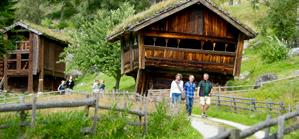

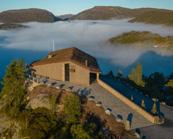



The coast of Jæren is directly located towards the open ocean and has always been considered one of the most dangerous along the Norwegian coastline. There is no archipelago here, with occasionally strong currents.
“Jæren has scenery for the advanced” according to Alexander L. Kielland.
Along this route, the ocean takes centre stage. Still, the road remains an essential part of the experience, winding through cultural landscapes often framed by ancient stone fences. The Norwegian Scenic Route Jæren differs from several other scenic routes as it is a service road. Here, you are in the centre of Norwegian food production with intensive agriculture in a flat, extensive, and wellkept cultural landscape.
Cultural heritage sites, the ocean, fields, and an endless changing light. The shifts of light, the varied landscape along the route, the dynamic and changing sky, and the never-ending horizon above the ocean. Visit one of Norway’s prettiest cemeteries, Varhaug gamle kirkegård, a final resting site by the sea. Hå gamle Prestegard at

Obrestad is also worth visiting, and the same goes for the numerous lighthouses, read more on page 49. At Brusand, along the road, you can find “Hitlertennene” (Hitler’s teeth), big blocks of stones to avoid allied invasions during World War II. Take in the beautiful landscape at unique rest areas at Bore Beach, Orre Beach, Refsnes Beach, Madland harbour, or the Kvassheim Outdoor Lighthouse.
The southern part of the Norwegian Scenic Route Jæren runs through the Magma UNESCO Global Geopark. The scenery varies from the flat landscape of Jæren, and you make your way through winding roads, hills and valleys, exciting rock formations, small lakes, and idyllic farms. The route passes the cosy city of Egersund and continues southwards via Sogndalstrand and Jøssingfjord to Flekkefjord. Make a short stop at Rekefjord and Nesvåg and visit the Instagram-friendly hike to Nesvåghålo.
Do not miss the novelty, Tunnelstuo, a picnic area in an ancient tunnel on your way to the Jøssingfjord. This is not only a welcome stop for cyclists. You can also walk down from the car park at the viewpoint, and here you can even spend the night in hammocks.
The Norwegian Scenic Route Jæren is part of the North Sea Route, between Kristiansand in the south, via Stavanger, to Haugesund.
Norwegian Scenic Route Jæren
Between Bore and Flekkefjord (FV507 and RV44)
Length: 130 km
Meters above sea level: 0–274
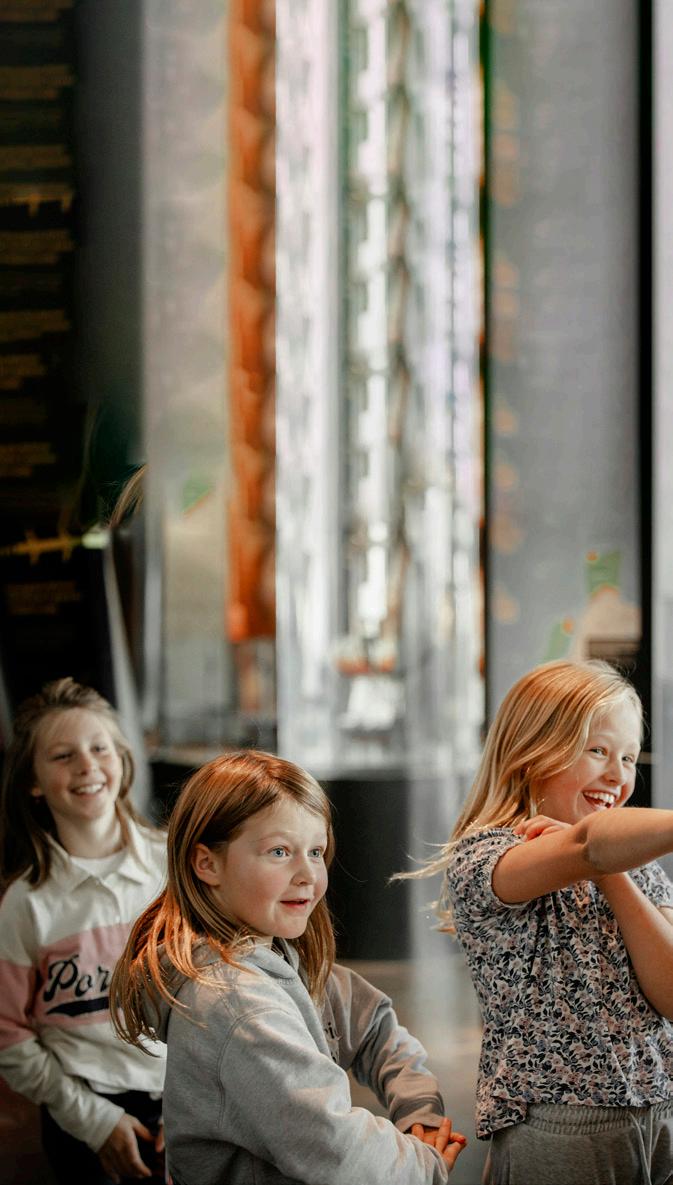
Explore, discover, and learn something new. See things you’ve never seen before. Do things you may never have done before. Here, on the edge of Norway, you and the children will create memories and have experiences for a lifetime, everything your family heart desires!
Our region has plenty to offer for families with children. Most hikes are suited for children. Remember to bring enough food and take enough breaks on the way. See pages 28–29 for the best tips for swimming and climbing. For museums, with fun activities suitable for the youngest children view page 42.


Do you and your family need a little breather? Visit Sølvberget, the library and cultural centre in the city centre of Stavanger, with plenty of exciting books in stimulating surroundings. Enjoy a cup of coffee, pastry and ice cream, listen to music, play games, borrow a computer, scan files and much more! The Odeon movie theatre is located in the same building.

Natural playgrounds
Nature makes the best playground! In our region, you’ll find familyfriendly hiking trails with barbecue spots and shelters. The Vistnes area in Randaberg, Trollskogen – the troll forest – at Hundvåg, Eventyrskogen – the adventure forest – at Gramstad and Alsvik nature centre by the Lutsi lakes are popular hiking destinations in northern Jæren. A little further south, find Rogaland Arboret, Sandtangen and the Frøylandsvatnet lake and Nærbøparken. Friluftstunet Brekko with its heated shelter and chapel is particularly popular in winter when the summer hiking trails become cross-country ski trails.
Hiking trails for extra motivation
Struggling to get the kids out and about? Take them to the park Sandvedparken in Sandnes and follow the Planet trail, where the sun, earth

In the entire region, visit one of the many day trip cabins available – ideal hiking destinations for kids.

and the other planets are placed on a scale of 1:1 billion. Along the way, you will pass playgrounds and picnic areas. “De syv ulvungane” – the seven wolf cubs – is an exciting hiking trail from the city centre of Sandnes up the Hanatrappene stairs to Ulvanutene via the most spectacular viewpoints over the city and the Gandsfjord. Can you find the seven cubs and their secret cave?
Experiencing a trip in the forest without walking yourself? Tryggvi Islandshestgård offers horseback riding in the Vagleskogen forest.
Another way to motivate the kids is to bring them to the disc golf course. The only thing you need is a disc golf disc or a frisbee, which you can often rent at the various courses. We recommend the disc golf trails at Åna-Sira, Sokndal, Vannbassengan and Skadberg in Egersund, Dalabekk in Hå, Ølberg and Vistvik, as well as the courses at Jørpelandsholmen and Preikestolen. Awful weather outside and hungry for more golf? In the middle of Stavanger city centre,
you’ll find Stavanger Camping, an indoor mini golf course for the whole family.
Playgrounds and skate parks
A city trip with shopping, museum and cafe visits can be spiced up with a few play breaks. Do not miss out on Geoparken next to the Norwegian Petroleum Museum, inspired by the Troll oil and gas field, featuring trampolines, tunnels, and graffiti. In Stavanger, you also find the popular Ajaxparken playground, the Hermetikk playground at Kjelvene and the brand-new playgrounds right by the Valberg tower and the lake Mosvatnet. Ruten in Sandnes offers both a playground and a skate park. In Tasta, Stavanger, you’ll also find one of Northern Europe’s largest and most beautiful skate parks, Tasta Skatepark. You can also find skate parks at Hundvåg, Hinna, Bogafjell, Ålgård, Bryne, Egersund and Hauge i Dalane.

Tempted for indoor playing?
Bring your kids to Veras Lekeland in Bryne. Or try a round of both mental exercise and physical activity at ‘Fangene på Fortet’ in Stavanger.

Kongeparken
Western Norway’s largest family park is a significant favourite with children of all ages, with more than 60 attractions in magical surroundings.
Fun at the Museum
Museums in the area are also perfect for families with children. You can find out more about the region’s fantastic interactive museums on page 42.

Experience traces from the Stone Age, Bronze Age, and Iron Age. Subsequently, travel forward in time and catch a glimpse of the Viking Age, with the battle of Hafrsfjord as a dramatic highlight. Also, be fascinated by the development of the last couple of hundred years, from fishing and seafaring to oil and energy. Hear the whispers of history!

10,000–1700 BC
The first people came to Norway around 10,000 BC, and they were hunters and gatherers. Agriculture became more widespread in southern Norway around 2400 BC.
Vistehola is one of Norway’s oldest Stone Age settlements. People first settled here around 6,000 BC. Today, the cave sits 16 meters above sea level, but during the Stone Age, the shoreline reached its entrance. Among bones, horns, and flint tools, archaeologists discovered the skeleton of a 15-year-old, known as the Viste Boy. It is one of the oldest discoveries of human remains in Norway.
1700–500 BC
Society became more organised and layered. The wealthiest chieftains traveled on trade and war expeditions to southern Europe, exchanging goods for bronze. There are countless burial mounds from the Bronze Age in our region, where rich findings have been made. Instead of writing, people carved images and symbols into rock faces, called petroglyphs. For example, you can find petroglyphs on islands Austre Åmøy and Løland (Ombo), with clear symbols of ships, rings, and foot soles.
500 BC–570 AD
Iron was first imported to Norway and later extracted locally. The refinement of iron into weapons, tools, jewellery, etc. became of great importance, and it became possible to build large, seafaring ships, a prerequisite for the Viking expeditions. Throughout the region, there are traces of this era: remains of farmsteads, castles, burial mounds, and assembly places. A good example of this is the Tinghaug area in Klepp.
Domsteinene på Sola is a reconstructed stone circle near Stavanger Airport. The monument may have been a court, assembly place, sacrificial site, or a sun and seasonal symbol. Also, at the top of Skårabrekkå in Egersund, you will find a stone circle, Stoplesteinan, which may have been a burial ground.
Rosslandsguden (God of Rossland) is a 61 cm high stone head found at Rossland in Sokndal municipality, together with a stone altar and sacrifice vessels. Rossland is a rich cultural heritage area believed to have been a place of worship in the early Iron Age, in connection with the preChristian sacrifice and fertility cults. According to legend that the altar was used for horse sacrifices to the god Frey. The unique stone head is now on display at the Jøssingfjord Science Museum, and a copy of Rosslandsguden is placed at Rossland where the original was found.

Learn more about the Iron Age. Visit the Iron Age Farm, a reconstructed farmstead that operates as a living openair museum. Here, the fire burns on the hearth, and if you’re lucky, you’ll get to taste freshly baked griddle cakes.
According to the sagas, Harald Fairhair united Norway into one kingdom after the Battle of Hafrsfjord in 872. Today, the battle site is marked by the “Swords in Rock” monument by Fritz Røed. At the Viking House in Stavanger, you can sail in a virtual Viking ship and experience the battle of Hafrsfjord up close.
Did you know that the largest Norwegian coin treasure from the Viking Age was found in Egersund? The so-called Årstad treasure consists of more than 1,300 coins and other silver objects, and the youngest coin in the find indicates that the treasure was buried around 1030.

The Vikings are often seen as brutal, violent warriors who took whatever they wanted. Perhaps equally fascinating is their early knowledge of democracy through their Thing system, and their close contact with nature and natural forces. Not to mention the strong position of Viking women in their time, as well as the Norse literary heritage they left behind. The story of the Viking kings and the life they led is based on stories from the sagas and traces in nature.
In the Middle Ages, the Stavanger region became an important religious hub in Norway. This is reflected in the stone crosses and churches that emerged during this period. Utstein Monastery is Norway’s only preserved medieval monastery, probably built in the 1260s. The monastery is nowadays a museum and event venue. Stavanger Cathedral, 1125, in Anglo-Norman style, is the only Norwegian medieval cathedral that has retained its original appearance and been in continuous use. The Sola ruin church is built on the remains of a Romanesque stone church from 1100.
From 1600 to 1800, rural society in the Stavanger region flourished. The economy was characterised by fishing, agriculture, and trade. The Stavanger region is a coastal area and has always had rich access to fish and seafood. The coast was an important livelihood for many people. At the same time, agriculture was also important, and it was common for each household to cultivate crops such as wheat, potatoes, and vegetables on the fertile land in the area. Especially Jæren was excellent for agriculture, with its large, fertile, flat areas.
Most people produced what they needed on the farm, and those who did not own a farm often lived on smaller crofts. The architecture in the region varied greatly and was often adapted to local conditions. Some houses, like Helleren in Jøssingfjorden, were built under rock ledges for shelter from the rain, while traditional Jærhus like Garborgheimen were designed to withstand Jæren’s harsh weather.

In the 1800s, the industrial revolution began to gain momentum in the region, leading to significant economic changes. There was a greater focus on the mass production of goods, leading to a shift from a natural to a cash-based economy. People could now buy the goods they needed instead of producing everything themselves. During this time, industry flourished in the region, from the Blåfjell mines producing titanium-rich iron ore to Stavanger’s booming canned food industry.
During World War II, the Stavanger region was an important strategic position for the German occupation forces. Germans occupied the area in April 1940, starting with an attack on Stavanger Airport, and over the next few years, the occupation continued, followed by significant changes.
The traces of Germany’s invasion are still present on a large scale. From fortresses, weapon positions, and defence works along the coast such as Fjøløy fort on Mosterøy island, Vedafjell in Sirevåg, or Hitlertennene at Brusand, to infrastructure like the heavily expanded Sta-
vanger Airport and Grinda waterworks that supplied water to Sandnes, Sola, and Forus. You can also see traces of the local resistance, such as Mysinghålå near Egersund, where resistance fighters had their base, or Uburhelleren in Oltedal, which served as a hiding place for civilians.
When the Ekofisk field was discovered in 1969, Stavanger went from being a small town characterised by fishing and the canning industry to becoming Norway’s oil capital. This growth was accompanied by technological breakthroughs, international impulses and a sharp increase in prosperity. You can learn more about the energy adventure at the Norwegian Petroleum Museum.

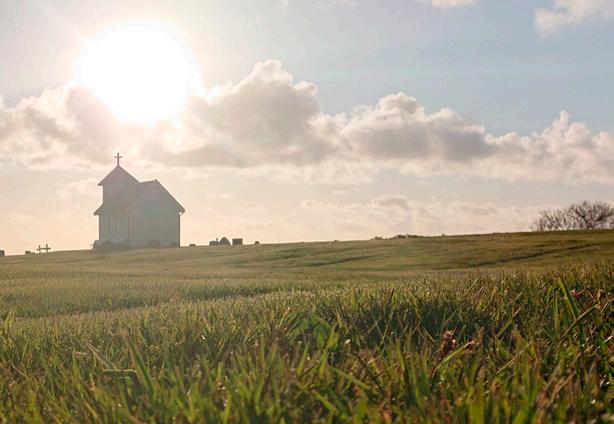

Our museums are open all year-round. Aviation history, crafts, rural life, magnificent properties from other eras, and various museums. Visit our museums and experience a journey through time and culture!
Travel back in time and experience the pulsing heart of history at the Museum of Archaeology in Stavanger! Explore the past through themed exhibits from the Stone Age to the Viking Age, meet people from the past and take a journey through time with the time machine. Cafe and shop are available. Utstein Monastery is Norway’s best-preserved medieval monastery on the island of Klosterøy! Explore the monastery’s 800-year history and learn more about those who once walked in the old stone halls. You can also admire the beautiful architecture and enjoy the tranquil atmosphere in the monastery’s beautiful surroundings.
As Stavanger’s oldest museum, the Stavanger Museum allows you to dive into both natural and cultural history. Learn about birds, animals, and nature both far and near. Play through history at the Norwegian Children’s Museum! In the
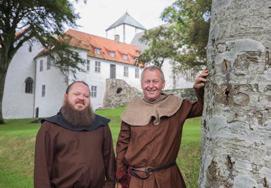

museum’s interactive play areas, the whole family can experience how previous generations lived and played.
Experience the region’s rich cultural history at our rural and folk museums. Sirdal Fjellmuseum at Kvæven shows the old farming culture in Sirdal and offers guided tours in the summer. Slettebø in Egersund has a rich and extensive collection of stoves, agricultural and craft tools from the 1600s to the 1800s, as well as workshops for various historical crafts. Grødalandstunet in Nærbø is a beautiful seaside farm with houses from the 1700s and 1800s. The farm sheds light on farm life at Jæren in the mid-1800s and early 1900s. Limagarden farm in Ålgård has existed since the 1600s and interprets the cultural history of sheep farming and old-fashioned wool production. Visit and experience Vistnestunet in Randaberg, a
traditional Jæren farmyard from the end of the 1800s, complete with a traditional Jæren house, smokehouse, barn, and windmill. Also, say hello to the animals on the farm while you are there! Lund Village Museum houses an impressive collection of handicrafts and unique rose-painted chests. Explore also ‘Haien’ crofter’s farm with summer exhibitions and a historical orchard.

Take me to the sea!
Experience Stavanger’s maritime history up close at the Stavanger Maritime Museum! This fascinating museum is housed in some of Stavanger’s best-preserved merchant buildings, offering a glimpse into the city’s rich seafaring and trading heritage. Let the little ones dress up step into the role of a dockworker on the quay, a market trader, or a shop assistant in an old-fashioned store. All in the fun activity exhibition “Working at the docks”. Go on a journey of discovery in the sail loft, shipping office, and country store and learn about maritime history, city history, and trade in the Stavanger region over the past 200 years.
Hungry for more? Take the ferry to the idyllic island of Kvitsøy and visit the Kvitsøy Lobster Museum to explore the island’s rich coastal culture and lobster fishing heritage. Discover exhibits on the fishing industry and daily life on the island, and see a unique collection of boats, engines, and fishing tools.

The Stavanger region boasts a wealth of industrial history and is the site of numerous industrial and technology museums that have been instrumental in Norway’s economic progress. These museums provide an immersive experience that will transport you through the region’s fascinating industrial history. The IDDIS Norwegian Printing Museum and Norwegian Canning Museum provide practical insight into how canned food was produced and the people who made the industry great. Learn about the importance of written language and printing for society. These museums share a common industrial history, as it was the need for colourful labels and packaging for the growing canning industry that laid the foundation for a significant graphic industry in Stavanger.
At the Norwegian Petroleum Museum, you explore the Norwegian oil adventure from the first test drilling in the North Sea to today’s technological innovations. Get engaged through interactive games, play on the oil platform playground, or be fascinated by inspiring films that show how oil has impacted our society and the world.

The Egersund Fayancemuseum displays a large selection of fayence products from the history of the Egersund Fayancemuseum. Thanks to the touch gallery for the blind and visually impaired, the importance of the faience industry as a cornerstone business is made accessible to everyone. At the Flyhistorisk Museum Sola, you




Retrieving oil and gas from the depth of the Northern sea made Norway one of the richest countries in the world. This puts us under an obligation. Learn more in the exhibition “Climate for Change”
Open for public all days:
1 September–31 May Monday-Saturday/Sunday 10.00–16.00/18.00
1 June–31 August Open daily from 10.00–19.00
We are located at Kjeringholmen in the city center of Stavanger - Norway




can experience Norway’s aviation history from World War II to the present day. With the large collection of historic aircraft at the museum, the visit becomes an unforgettable experience for both aviation enthusiasts and history buffs. You can get to know Sandnes’ industrial history from brickworks to bicycles at Vitenfabrikken.
Play and discover!
Vitenfabrikken in Sandnes is not just a museum, but also an interactive experience for the entire family. Who is the best at relaxing? How fast can you drive a wheelchair? From exploring space from a spaceship to exploring the region’s industrial history, there are several floors where you encounter technology, mathematics, and science in an engaging and activating way. Nær-
bø is home to Jærmuseet’s other science centre, Vitengarden. Here you can explore science and food production in new ways, with both indoor and outdoor activities. Don’t forget to say hello to the animals at the museum farm!
Jøssingfjord Science Museum offers exciting exhibitions, which aims to inspire children and young people to be more engaged in STEM fields. The dramatic location between the fjord and mountain is no coincidence and reflects the fascinating story of the interaction between the area’s geology and industry.
Take an art break!
Experience the works by well-known artists such as Kitty Kielland, Lars Hertervig, Edvard Munch,



jaermuseet.no
Opplev, delta og utforsk
Jærmuseet sine 12 museum og vitensentre Opplev, delta og utforsk
Jærmuseet sine 12 museum og vitensentre
Experience, Participate and Explore the 12 museums and science centers of Jærmuseet jaermuseet.no Opplev, delta og utforsk jaermuseet.no



Strandkaien 44. Across the road from the Tourist Office in Stavanger. Vikinghouse.no

Christian Krogh, Harriet Backer, and Frida Hansen at Stavanger Art Museum. In addition to artworks from its collection, the museum hosts temporary international exhibitions.
Frida Hansen (1855–1931) was one of Norway’s foremost textile artists with a significant international career. Nature was an important source of inspiration, and she often used classical motifs from ancient mythologies. Be inspired by her fantastic tapestries!
Did you know that Frida Hansen is Stavanger’s answer to Art Nouveau?
Hå gamle prestegard is scenically located right by the sea and consists of several protected buildings, including a large residence, a tradi-


tional Jæren house, and two barns. As a meeting place between the past and the present, the art and cultural centre offers a thought-provoking look at local history and its connections to the present. Awaken emotions and thoughts through exhibitions from significant international artists.
In the footsteps of literature
Interested in literary history? Learn more about the poet couple Hulda (1862–1934) and Arne Garborg (1851–1924) by a visit to Bryne. The Garborg Centre is an interactive museum and visitor centre that conveys the life and work of these two important cultural influencers. Garborgheimen in Undheim, Arne’s childhood home, is now a museum. The same goes for Knudaheio, the couple’s retreat and writing studio.


Curious about Stavanger’s history? Visit our museums!

If walls could talk Eiganes was historically Stavanger’s upper-class district. In the 1800s, wealthy shipping and trading families moved out of the city centre, first with summer homes and eventually permanently. Some of these beautiful villas are now open during the summer as museums, where you can experience how the city’s bourgeoisie lived in the 1800s: Ledaal was built as a pleasure garden for the Kielland family, inspired by Danish 18th-century architecture with elements of baroque and rococo. Holmeegenes was also built as a pleasure estate, with a combined residential and operational building following Danish models. From the 1890s, the property
was operated as a nursery. The manor house Breidablikk was built by the shipping family Berentsen, in Swiss style with neo-Romanesque and Gothic elements. The representative residence was not to be outshined by neighbouring property Ledaal.
beacon to beacon along the edge of Norway
In the mid-1800s, the great construction of lighthouses along the Jæren coast began. The task was to safely guide boat traffic past the exposed coast of the North Sea. Today, lighthouses often house summer cafes and exhibitions, and some can even be rented for overnight stays.


Lille Presteskjær lighthouse at the entrance to Rekefjord and Feistein lighthouse, on an island west of Sele boat harbour, are only accessible by boat but can be rented for overnight stays and events.
Eigerøy Lighthouse was once one of Europe’s most powerful in light intensity and is Norway’s first castiron lighthouse. From the parking lot at Nautasundet, there is a two-kilometre hiking trail to the lighthouse with a summer open cafe.

Kvassheim Friluftsfyr lighthouse is one of the attractions along the Norwegian Scenic Route Jæren, with exhibitions on rescue history and a landscape conservation area with birds as the main theme. Obrestad lighthouse, between Hå
Gamle Prestegard and Obrestad harbour, is also a museum and offers overnight stays.
At the northern tip of NordJæren, you will find Tungenes lighthouse, an important cultural arena in the region, with exhibitions, concerts, galleries, and a Sunday open cafe. At the outermost point of Fjøløy island, strategically located between Stavanger and Ryfylke, is the Fjøløy lighthouse, in a popular outdoor space with war memorabilia from World War II. To experience the Kvitsøy lighthouse, take the Kvitsøy ferry from Mekjarvik or the express boat from Stavanger to Kvitsøy.


Looking at art is an aesthetic experience that can excite, but also challenge thoughts, and attitudes and reflect people and society. In our region, you can view spectacular art outdoors. Maybe it is the art that is watching you?
Cerebellum in Langgata in Sandnes consists of seven sculptures made by Christian Sunde where the theme of the artistic expression is mankind. The sculptures reflect a form of reference in ourselves, with an emphasis on contradictions and differences in us, whether we are big or small, lonely or social, in dialogue with each other, happy or sad, curious or withdrawn, determined or insecure.
Broken Column is a sculpture project by Antony Gormley, consisting of 23 figures placed between the Stavanger Art Museum and the harbour. The figures in sandblasted iron are based on a casting of the sculptor’s own body, with a height of 195 cm.

Some works of art were created to commemorate special circumstances, such as Brutt Lenke – a memorial to commemorate the deceased after the Alexander Kielland accident in 1980, the largest casualty in Norwegian oil history with 123 fatalities. The monument is at Måkeberget in Kvernevik.

Better known is the monument Sverd i fjell –Swords in rock, made by Bryne artist Fritz Røed to commemorate the battle of the Hafrsfjord, where Harald Fairhair united Norway into one kingdom in 872. A popular photo stop with both a beach and an ice cream parlour during summer. In Bryne, Fritz Røed (1928–2002) designed a park, where 10 of his sculptures are located.
Thanks to NuArt, who annually organise a street art festival in Stavanger for many years, the city and its surroundings are the unrivalled street art destination in Norway. In recent times, the street art festival Nice Surprise Festival has also left its mark on the streets of Stavanger. In both rural and urban areas, you will find works by well-known street artists with artworks from situationism, graffiti, muralism, cartoon culture, stencil art and activism. Even several Kolumbus buses in the region drive around decorated with street art. Guidecompaniet offers guided Street Art tours in both Stavanger and Sandnes. Nuart is an official partner with Google Arts & Culture. Experience and learn more about the art even before you visit the destination on Nuart’s Google Arts & Culture page.


Did you know that Pøbel is the pseudonym of an anonymous artist from Jæren?
He became famous when he took street art into rural areas and nature by decorating abandoned buildings in Lofoten, sparking a debate about the meaning of street art.
At Bryne, you will find both his worldfamous corona work “The Lovers” and a tribute to the local hero, football player Erling Braut Haaland.

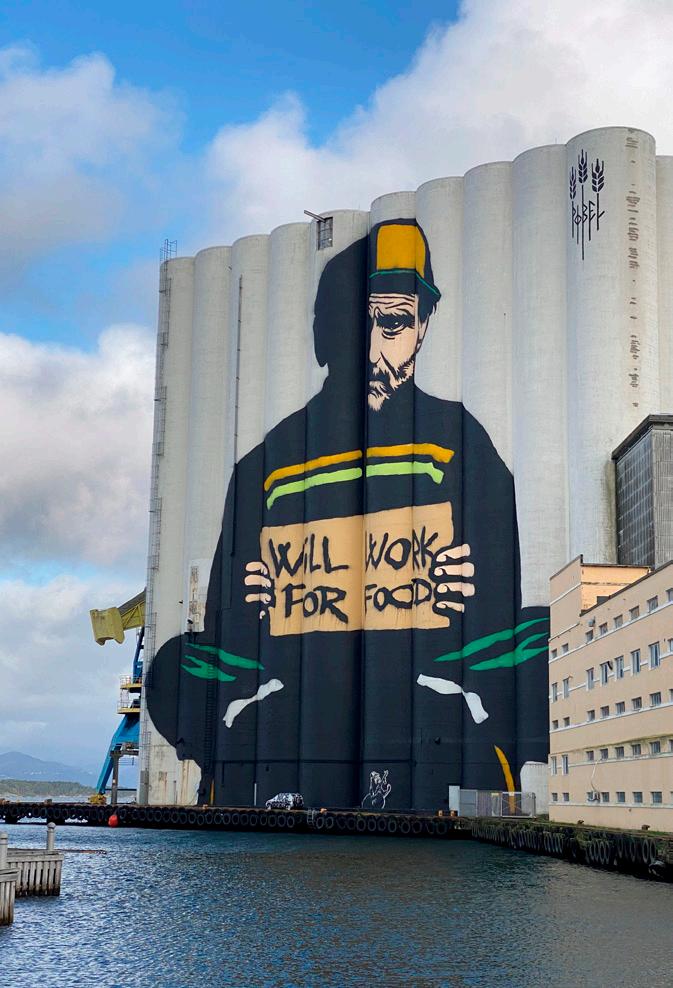
EXPLORE STREET ART BY PØBEL IN JÆREN!
Ever seen the iconic “The Lovers” coronavirus artwork, or the mural of football star Erling Braut Haaland? Both in Bryne, these were created by Pøbel, one of Norway’s leading street artists! Pøbel isn’t limited to just murals though, he works across a range of mediums including paintings, photographs, and sculptures.
Fancy a spot of art hunting? Jæren is home to seventeen of Pøbel’s artistic treasures – why not see how many you can find!

Architecture is stories told, about people, eras and ideas, and styles. We have selected several architectural gems for you, ranging from classic to modern and innovative.
Step back! Enjoy!
Northern Europe and Norway are well known for their wooden houses, and the towns and villages in our region are no exception. Stavanger has Europe’s largest continuous wooden house settlement!
Old Stavanger, with its 173 wooden houses from the 1700s and 1800s, is one of the most photographed tourist attractions in Stavanger city centre. The residents here are proud of the area and enjoy decorating their houses and gardens with a large variety of lush flowers. From the same period, the Stavanger wharf houses once served as herring factories, salt and timber stores, and hubs for other commercial activities. Around 60 of these harbour houses remain today, now mostly used as offices, restaurants, and apartments. Experience the historic boathouses from the inside at the Stavanger Maritime Museum. Make sure to visit Skagen 18, one of Stavanger’s oldest houses. The oldest part of the house was built in the 1720s, and the facade we see today is from a renovation in 1787, a variant of Rococo with beautiful carvings and pilasters. From here, it’s not far to the trendy Øvre Holmegate, which is rightfully called the colourful street – here all houses were painted in different colours according to a colour plan by artist Craig Flannagan.


You can also find several old, wellpreserved harbour houses in Sogndalstrand, Åve in Rekefjord, and Åna-Sira, a picturesque fishing village with a church, shrimp factory, and power station. Sogndalstrand is the only village in Norway where both the wooden house settlement and the surrounding cultural landscape are protected. Here, discover the traditional and the historic amongst the spectacular, and enjoy the tranquillity of the charming little neighbourhood. Sogndalstrand Kulturhotell has helped attract more business to the small coastal community, contributing to an increase in local engagement in recreating the old trading environment.
Egersund city has one of the best-preserved woodhouse settlements in Norway. Hauen, Egersund’s so-called “medieval city”, has developed from necessity and use, not according to any urban plan. Here, houses, outbuildings, workshops, barns, and stables were all built together in beautiful harmony. The buildings have undergone continuous changes over time, but the foundations remain the same as when the area was developed between 1750–1800. You can also find several beautiful timber houses in Strandgaten, the city’s former main street.
The most impressive public architecture in Stavanger is located on the hill of Våland. Four key institutions, including Stavanger Museum, Stavanger Old Gymnasium, Rogaland Theatre, and the former Stavanger Hospital, were designed and constructed by the architect Hartvig Sverdrup Eckhoff at the turn of the last century. The buildings were all made in a classical style from the period, and the area became known as the “Acropolis of Stavanger” among locals.

Hotel Victoria, Stavanger’s first hotel, also dates from this period and was completed in 1900. Henry Bucher designed a refined and ornate neoRenaissance building that fit the ambition of a luxury hotel at the turn of the century. The building has an intricate facade with patterns of red and yellow brick with white details and several classical elements such as the main entrance with its slender columns. In recent years, the hotel has undergone extensive renovation and now shines with the same glory as before, with an elegant and modern expression.

Another notable hotel in Stavanger is the Eilert Smith Hotel, named after the architect who designed it in the 1930s, with all the aesthetic elements of the modernist movement. Clean and elegant without excessive details or ornaments. Form follows functionality and efficiency as ideals in modern times. Today, the Eilert Smith Hotel offers luxury accommodation as well as Norway’s best food experience at the MICHELIN-stars restaurant RE-NAA***.
Nestled in the Lysefjord, the small community of Flørli is renowned for its 4444 wooden steps stretching from the fjord to the mountain. You get close to the hydropower history of the 1900s. The old power plant now houses a summer cafe and an exhibition about the village’s history. The roadless village is accessible by boat and has several accommodation options. At Hydro’s Røldal-Suldal facility in Nesflaten, you will find one of the finest and best-preserved examples of the functionalist style in Norway. Architect Geir Grung designed the area with power plants and building plots in the 1960s. Here you can sleep at Energihotellet, with an interesting history behind a combination of concrete and sustainable energy solutions.


One of the key projects of Stavanger2008 – the European Capital of Culture – was Norwegian Wood, an initiative aimed at developing wood architecture through innovative and environmentally friendly buildings. Experience this firsthand with an overnight stay at Preikestolen Fjellstue, which blends seamlessly into the landscape at the starting point of the trail. Another example from Norwegian Wood is Lanternen in Langgata, Sandnes – a striking wooden and glass multi-purpose structure that serves as an outdoor stage in the pedestrian street.
Find several popular wooden structures in nature. Midgardsormen is a winding, 230-meter-long footbridge that crosses the lake Frøylandsvatnet and connects the east and west hiking areas together. The bridge is named after the sea serpent in Nordic mythology. While hiking along the Jæren beaches, take a breather at Friluftshuset på Orre, a wooden building in timeless architecture shaped in harmony with nature and man, a typical concept by the original architect of the building, Per Line. Friluftshuset is a regional cultural centre with exhibitions and concerts.
Finansparken Bjergsted was completed in 2019 and is one of Europe’s largest wooden commercial buildings. The iconic building is designed by Helen & Hard and is the headquarters of SpareBank 1 SR-Bank.
Other notable buildings in Stavanger include the Stavanger Concert Hall, designed by RATIO Architects, and the Norwegian Petroleum Museum by Lunde & Løvseth. This building is a symbolic interpretation of the Norwegian bedrock, the open coastal landscape towards the sea, and offshore installations at sea - and thus reflects the very content of the exciting exhibitions inside.
In Sandnes, the Vitenfabrikken, designed by Askim Lanto Arkitekter MNAL, and the Sandnes town hall by the German architectural firm Code of Practice are both exciting buildings. When Sandnes had a new town hall in 2019, great emphasis was put on understanding local history. The proud history of the ceramic city is preserved in the exterior facade with ceramic cladding panels in brick.

Høyhuset på Bryne has become a landmark that helps define Jæren. The lowrise threestory structure and the 18-story high-rise building surround an urban square where there are shops, offices, the municipal library and the museum Garborgsenteret. From the cafe on the 18th floor, you have a magnificent view of the flat Jæren landscape.

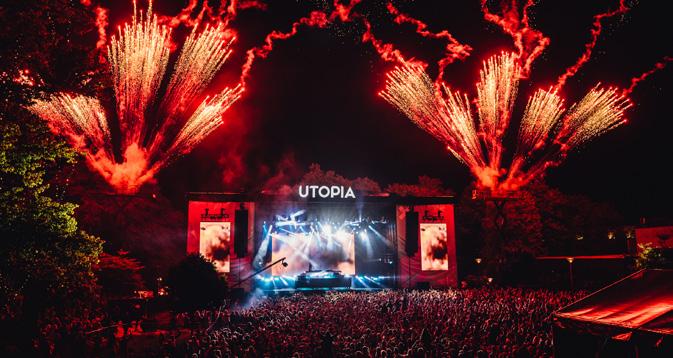
Concerts, roller skis and a marathon. Norway’s largest foodfestival, Gladmat. Do you feel your mouth watering?
Edge of Norway offers several festivals in food, music, and sports of international calibre. Welcome to bustling life on the edge of Norway!
Maijazz 6–10 May
Stavanger Pianofestival 29–31 March
Stavanger2025: City festival 24–27 April

Dragefesten Kite Festival 31 May–1 June
Trolljegerprøven Sandnes 14 June

Gladmat food festival 25–28 June

Stavanger Vinfest 19– 22 March


Autopia Expo 25–27 April

Sirdal Ski Race 5 April

Sola Airshow 24–25 May
Jærdagen & Jærnåttå Bryne City Festival 22–25 May

Norway Chess 26 May–6 June
Nordsjørittet Bike Race 14 June

Trolljeger Junior Sandnes 15 June
Stavanger2025: 900 x hurrah: The country regatta 1886 7–8 June
More events in the event calendar:






Stavanger Chamber Music Festival 5–10 August
Egersund
Folklore Festival 3–5 July

Stavanger Marathon 30 August



Kapittel Literature Festival 17–21 September



Vinterland i Sandnes winter fair 21 Nov.–21 Dec.


Stavanger2025: Emigrant ship ‘Restauration’ sails out from Vågen 4 July
Utopia 22–23 August
Skifestivalen Blink 6–9 August
Christmas Market Egersund 4–14 December

3-sjøersløpet race 8 November

Christmas Market Stavanger: 29 Nov. –20 Dec.
Christmas at Kongeparken 22 Nov.–15 Dec.
In 1125, Stavanger Cathedral was completed, marking the beginning of the story of Stavanger city and diocese. In 2025, Stavanger’s 900th anniversary will be celebrated with grand events throughout the year. The anniversary year will feature public celebrations, grand concerts, and newly written theatre pieces.
Stay tuned on the website for the jubilee activities at www.stavanger2025.no.
2025 also marks the 200th anniversary of the first organised emigration from Norway to America. It was in 1825 that the ship Restauration sailed from Stavanger to New York with 52 Norwegian emigrants on board. On 4 July, the new ‘Restauration’ will repeat the same voyage.

Discover new flavours, experience fresh, local ingredients, and explore a dining scene full of contrasts. At the Edge of Norway, you’ll find everything from MICHELIN-starred restaurants to local favourites and authentic street food.
Stars and distinctions
Did you know that Stavanger is one of the few cities in Norway with multiple MICHELIN-starred restaurants? RE-NAA boasts an impressive three stars in the MICHELIN Guide Nordic, and the passionate pair running the restaurant, Sven Erik and Torill Renaa, are constantly adding new food concepts to Stavanger’s food map. Roger Asakil Joya, the acclaimed chef behind the one-MICHELIN-starred Sabi Omakase, has also contributed to the city’s thriving food scene by establishing several restaurants in the region. Stavanger is also home to K2 and Hermetikken,

which have each been awarded one MICHELIN star. The restaurants Tango, Söl, Bellies and Bravo have received MICHELIN distinctions, highlighting the city’s growing culinary scene.
Savour sea and moorland views
The region has numerous eateries where you can enjoy great food and drinks while taking in breathtaking views. The castle in Sirdal, Byrkjedalstunet and Villa Rosehagen in Jørpeland are just some of the highlights. If you’d rather enjoy an ice cream or snack with a sea view, we recommend a stop at IsParadis or Ølbergkiosken. End the day in style with a drink at Salon du Nord, overlooking Vågen in Stavanger.
local produce
We are lucky to live in the centre of Norway’s food bowl. The mild, humid climate in the Stavanger region makes it particularly favourable for farming. This means that most ingredients do not have to travel far, before ending up on the table. The region is a major producer of parsley, potatoes, beetroot and cucumbers. As much as 80 per cent of Norway’s cucumbers


Opening hours: Tuesday-Saturday Lunch: 11:00-16:00 Dinner: 16:00-22:00

With stunning surroundings of Stavanger Concert Hall, the newly renovated Spiseriet presents itself as one of Stavanger’s top culinary experiences.
With a strong focus on local ingredients and delightful experiences, we are ready to welcome you with open arms. Whether you’re looking for a tasty lunch with friends, a great of local coffee, ot to try our adventurous small cource menu we got you covered.

come from this area. The region’s talented chefs utilise the local harvest in creative ways and allow seasonal ingredients to make their mark on the menus.
Sustainable food production and farm shops in historical surroundings
Klostergarden is now run by the 11th generation in a protected cultural environment at Utstein, where history traces back to Harald Fairhair. Here, you can experience sustainable food tourism, rent rowboats and kayaks, enjoy lunch baskets for visitors, stay overnight, join guided tours, and explore the farm shop.
Beautifully located by the quay in Dirdal, you will find Dirdal Gardsutsalg, a farm shop established in 1908. The building itself is over 200 years old and the family that now carries on the tradition of both the farm and the shop is committed to high standards of animal welfare and sustainable production
Visit Randaberg’s first fruit farm! At Sandalen Gård, you can learn about apple production and enjoy freshly squeezed apple juice and locally produced cider. The farm shop can tempt you with everything from juicy apples to flavoursome jams and handmade cider.

Ølbergkiosken
“Norway’s best soft serve ice cream at Norway’s most beautiful beach”
Open daily from 11.00–19.00 April until September
Facebook.com/olbergkiosken

Villa Rosehagen
Cosy restaurant in an old villa, with a large rose garden and terraces. In the middle of the city centre of Jørpeland, with a view of the fjord.
Local ingredients, great kitchen with a focus on fish and seafood.
villarosehagen.no
At Nyyyt at Røysland Gard in Vikeså, you can enjoy a diverse selection of premium products such as Wagyu and dry-aged meat. Their farmtotable concept takes guests on a flavourful journey through authentic craftsmanship and local food production, with an 8-course meat menu celebrating the origin of food and supporting the local community.
Shopping locally contributes to dynamic villages in Norway! You can expect high-quality products whilst helping sustain jobs and culture in the countryside. Make sure to try local drinks –we recommend products from Lervig Local and Berentsens Brygghus.








the earth.

florogfjare.no

Popular ice cream parlour right next to Swords in Rock and Møllebukta bathing area. Delicious ice cream from April to the end of September. Toppings with Norwegian berries, rhubarb and cloudberries. Snacks, coffee, and hot chocolate.
facebook.com/isparadis.no
Sandalen Gård – Fruit & Cider
An apple farm and cidery situated just a 10 mins drive from Stavanger. Offers a wide selection of ciders as well as juices, jam and honey.
Opening hours: Thu. & Fri. 17–20 • Sat. 12–18
sandalengard.no


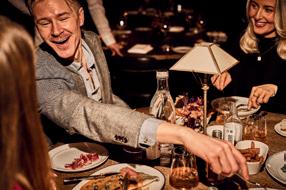
In the heart of Stavanger, you will find Brasserie Pigalle. The restaurant takes you on a gastronomic journey that stimulates all the senses. With the grill as the very heart of the kitchen, Brasserie Pigalle offers a classic menu with a modern twist. From here, the restaurant serves all kinds of exciting dishes –all impossible to resist.
When the evening turns into night, you can stroll into the cocktail bar SALON du NORD. The menu is inspired by the bartenders’ travels, the hotel’s history, and the local area. Along with refreshing drinks, you can be served salty and sweet snacks. The bar serves lunch during the daytime.


As the night approaches its end, Hotel Victoria awaits you with the cosiest bedding. In our rooms, you will have the perfect conclusion to a memorable day filled with delightful experiences. The morning after, you can indulge in our bountiful breakfast buffet and get the best start to your day.


Narrow cobblestone streets, lively niche shops and hand-picked quality products – the region is full of treasures for those who love bringing home memories. Stroll through the town’s cosy shopping streets or explore farm shops offering fresh produce from Jæren and Ryfylke.
Choose local producers
In the region, you’ll find unique products that make great memories and support local craftsmen and businesses. Dale of Norway has been producing quality knitwear since 1879, the KANT shop prints clothes by hand with inspiration from Jæren, and Figgjo Ceramics is known for its timeless crockery.
You will also enjoy your food and drinks even more when you know they are produced by local, environmentally friendly producers. Local drinks like apple juice, made from local apples, taste great and are often a choice on the menu.


Made in Norway since 1879
Søregata 31 daleofnorway.com

The small general merchant shop with charm and history. In the middle of Vågabakken, the old part of Jørpeland, right next to the harbour.
Local produce, souvenirs, interior design and a lovely ice cream parlour and coffee.
facebook.com/ skafferietvagabakken

Handmade glass with unique variations. High quality and functional elegance. Experience glassblowing up close!
Right by the Norwegian
mingarwalker.no
Ready to scratch that shopping itch?
Do not miss out on Norway’s most colourful street in Stavanger, Øvre Holmegata, also called Fargegaten. This street is home to several unique shops, cafes, art galleries and pretty photo stops. In Sandnes, you can treat yourself to a pleasant stroll through the city centre. You’ll also find unique specialist shops, galleries, cafés and restaurants in smaller towns and villages such as Ålgård, Dirdal, Mosterøy, Bryne and Egersund.







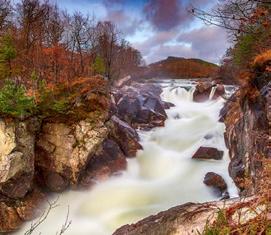






Before tomorrow unfolds, you will need a good night’s rest. The options are plenty! Do you prefer to stay the night in the city, in historical surroundings, in the mountains or by the sea?
Sleep under the stars at a campsite or spend a few nights in a lighthouse – the choice is yours. Rest well, and let’s talk tomorrow. Edge of Norway is waiting for you!
Stay for a while!
Once you are here, stay long enough to experience the endless adventures in our region. You can also make responsible choices when staying at the accommodation. Most accommodations have simple environmental measures you can


follow. You can contribute by opting out of daily room cleaning, reusing your towels, and being mindful of water use. Most importantly, don’t forget to experience as much as possible!
Find more places to stay:

Kvassheim lighthouse
Spend the night at the edge of the ocean in the Assistentbolig house. Fits groups of up to 12 people. Book your stay at inatur.no. 54 km from Stavanger, 30 km from Egersund.
jarenfri.no/friluftsenter/ friluftsfyret-kvassheim

Ølberg camping
It is hard to find a place to sleep closer to the sea, without a boat.
Open from 10 May to 30 August Ølberg havnevei 4054 Tjelta Caravan, car, tent, no booking.
Cabin booking: jarenfri.no/overnatting/olberg-camping
jarenfri.no︱+47 907 84 849

Bakkaåno Camping & Gjestegard
Accommodation in camping cabins or in our unique silo in scenic surroundings. Right by the Norwegian Scenic Route Jæren between Egersund and Flekkefjord.
Bakkaanocamping.no
+47 51 47 78 52

Ogna Camping provides space for caravans, motorhomes, and tents.
Short distance to Norway’s most beautiful beaches. Here, you can enjoy lovely days by the sea. Ogna – a starting point for great hikes and outings.
ognacamping.no



Stavanger Camping Mosvangen
Modern campsite just outside the city centre of Stavanger. Pitches for motorhomes, caravans and tents.
Cabin rental – Bicycle rental Car rental – Shop 50 m away Gamlingen swimming pool.
stavangercamping.no
+47 51 53 29 71

Hotel Victoria
Stavanger’s oldest hotel, right next to the harbour.
Luxurious, high-quality interiors.
The stylish Cocktail & wine bar Salon du Nord offers good coffee, delicious lunch and artistic cocktails.
hotel-victoria.no




© Claire Droppert
During autumn, the Edge of Norway is painted in vibrant colours, as rugged coastlines, deep valleys, and magical fjords come together in stunning landscapes. Embark on adventerous road trips amidst tumbling waterfalls and stumble upon sheep herds descending from their mountain pastures. Enjoy smooth, white sandy beaches, and be amazed by the vibrant autumn colours painting the countryside.





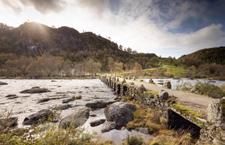




Foren Folkvordveien
Solaveien
Larsamyrå
Kolheim
A.Eggebøsvei
PrestholsteigenMaurholen
Solaveien
Lupinveien
Kvadrat Granveien
Stokkavei
Gamle
GamleSomavei
Steinstemmyrå
Varatunparken
Skjeneholen Kjærholen
Brattholen
Kjærholen
M. Skadsems vei
Lerkeveien
Seljeveien
Håholen
Lura kirke
HÅHOLEN
Bedriftsveien
Nikkelveien Dyre Vaasvei
Sandnes sykkelog aktivitetsgård
ØsterHus
Ormaskogen Tulipanveien
Porsholen
Eikeveien Lurabekken
Varatun gård tunetRossalands-
StåleKyllingstadsvei A.Grimdalensvei
VARATUN
G.Vigelandsgate
Sandnes stadion
Giskehallen
Jønningsheiveien
Sandnes vgs. Giske usk.FStangsgateSmeaheiveien
Sleireveien
StadionveienAustreTjørnvei VemorkveienGrinigata
Welhavens vei
Einerveien A . Garborgsvei
Solaveien
Øvreveien
H.Ibsensgate
Gåshaugen Mølledalen Kornveien
Lurahammaren
Luravika badeplass Lurastø
JonasLiesgate
A.Kiellandsgate
Postveien
Solaveien
Rygjaveien Ullandhauggata
Jadarveien Trones skole
KirkegataEidsvollgata
Langgata
E.Munchs gate Prof. Dahls gate Chr.Krohgsgate
Langgata
Ulvanutane
Heiasvingen
Bakken
Frøyerveien
Skoleveien FjellveienIdrettsveien
Losveien
Vågsgata
Holbergsgate
Vølstadv.
Old Stavanger
. Stokkaveien
Misjonsveien
Eiganes kolonihager
Litle Stokkavatn lake
Løkkeveien
Skole- hage
Duesvei StokkaveiØvre Nedre Stokkavei
Chr. Skredsvigs vei STOKKA
Mosvatnet lake
Tjensvollveien
Gandsfjorden Bruvikveien ConsulSigvalBergesensvei



Fjordcruise Lysefjord & Preikestolen
3-3.5 h – NOK 840
Travel silently through Lysefjord, one of Norway’s most beautiful fjords! Experience steep rock walls, majestic waterfalls, and gaze up at amazing Preikestolen.
Preikestolen cruise & hike
8-9 h – NOK 1340
Join our spectacular combination tour - a magical fjord cruise through Lysefjord followed by a hike to Preikestolen. A world-class panoramic view awaits at the top!

Book your tour here!
